Subhadip Basu
Computational modeling of Human-nCoV protein-protein interaction network
May 05, 2020



Abstract:COVID-19 has created a global pandemic with high morbidity and mortality in 2020. Novel coronavirus (nCoV), also known as Severe Acute Respiratory Syndrome Coronavirus 2 (SARS-CoV2), is responsible for this deadly disease. International Committee on Taxonomy of Viruses (ICTV) has declared that nCoV is highly genetically similar to SARS-CoV epidemic in 2003 (89% similarity). Limited number of clinically validated Human-nCoV protein interaction data is available in the literature. With this hypothesis, the present work focuses on developing a computational model for nCoV-Human protein interaction network, using the experimentally validated SARS-CoV-Human protein interactions. Initially, level-1 and level-2 human spreader proteins are identified in SARS-CoV-Human interaction network, using Susceptible-Infected-Susceptible (SIS) model. These proteins are considered as potential human targets for nCoV bait proteins. A gene-ontology based fuzzy affinity function has been used to construct the nCoV-Human protein interaction network at 99.98% specificity threshold. This also identifies the level-1 human spreaders for COVID-19 in human protein-interaction network. Level-2 human spreaders are subsequently identified using the SIS model. The derived host-pathogen interaction network is finally validated using 7 potential FDA listed drugs for COVID-19 with significant overlap between the known drug target proteins and the identified spreader proteins.
An Offline Technique for Localization of License Plates for Indian Commercial Vehicles
Jan 22, 2015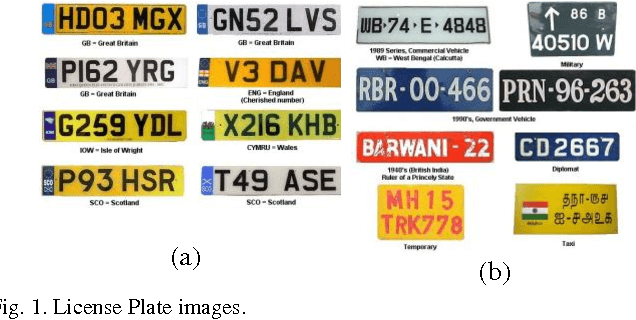
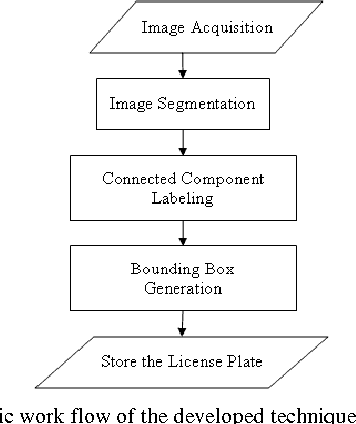
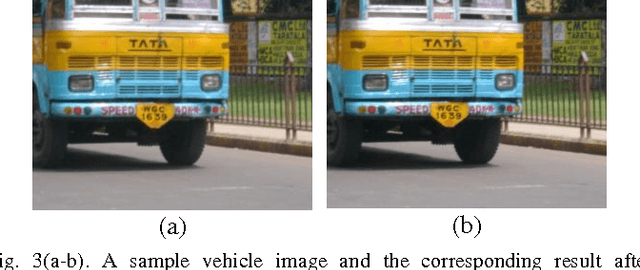
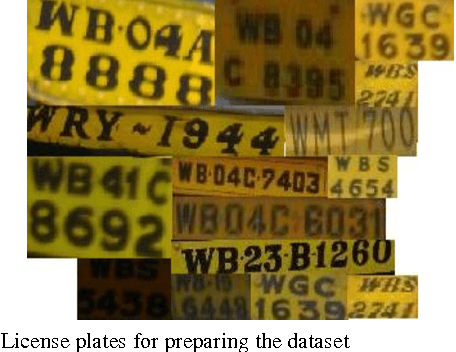
Abstract:Automatic License Plate Recognition (ALPR) is a challenging area of research due to its importance to variety of commercial applications. The overall problem may be subdivided into two key modules, firstly, localization of license plates from vehicle images, and secondly, optical character recognition of extracted license plates. In the current work, we have concentrated on the first part of the problem, i.e., localization of license plate regions from Indian commercial vehicles as a significant step towards development of a complete ALPR system for Indian vehicles. The technique is based on color based segmentation of vehicle images and identification of potential license plate regions. True license plates are finally localized based on four spatial and horizontal contrast features. The technique successfully localizes the actual license plates in 73.4% images.
Development of an automated Red Light Violation Detection System (RLVDS) for Indian vehicles
Jan 22, 2015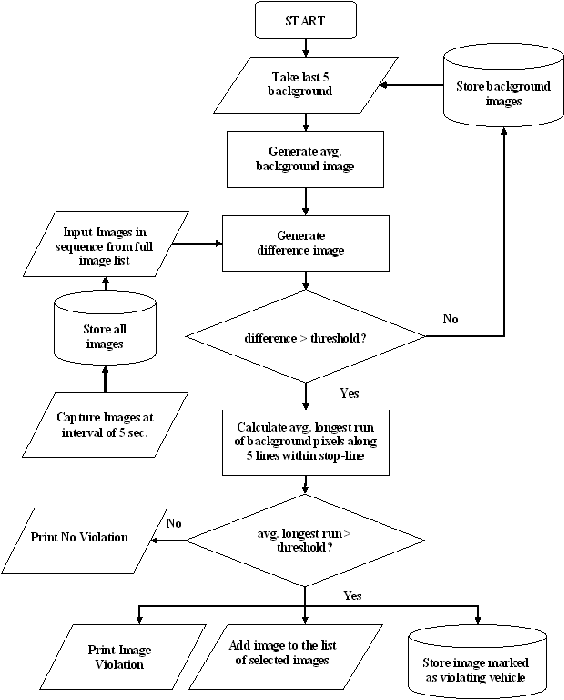
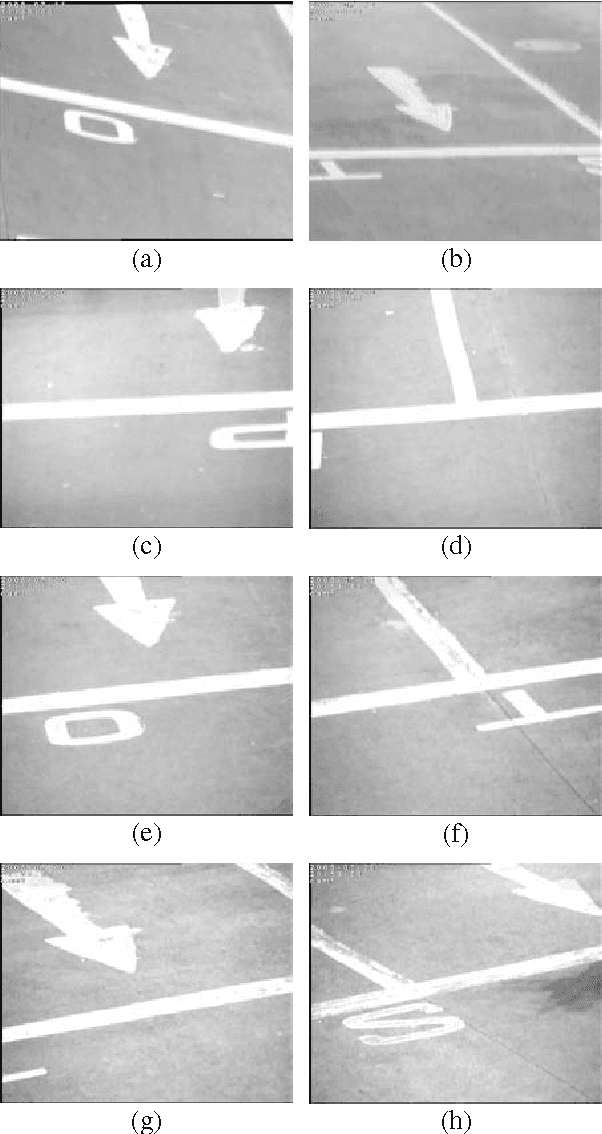
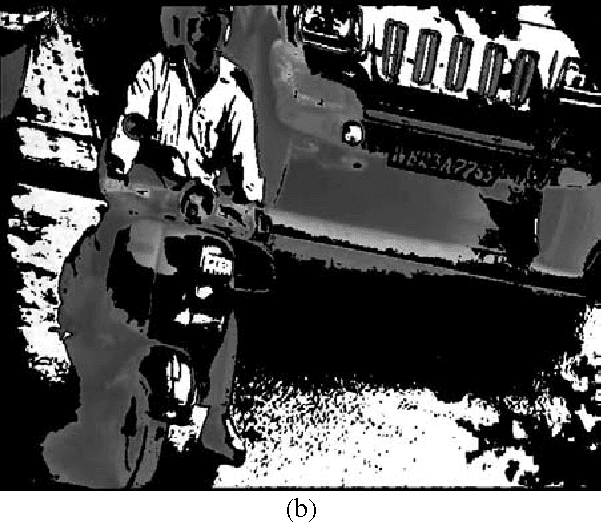
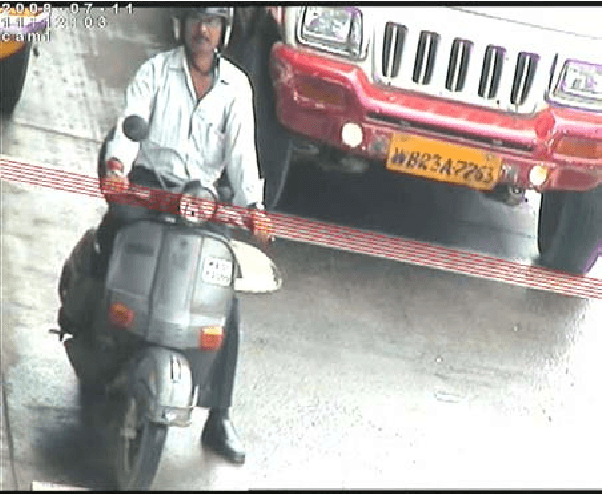
Abstract:Integrated Traffic Management Systems (ITMS) are now implemented in different cities in India to primarily address the concerns of road-safety and security. An automated Red Light Violation Detection System (RLVDS) is an integral part of the ITMS. In our present work we have designed and developed a complete system for generating the list of all stop-line violating vehicle images automatically from video snapshots of road-side surveillance cameras. The system first generates adaptive background images for each camera view, subtracts captured images from the corresponding background images and analyses potential occlusions over the stop-line in a traffic signal. Considering round-the-clock operations in a real-life test environment, the developed system could successfully track 92% images of vehicles with violations on the stop-line in a "Red" traffic signal.
A novel scheme for binarization of vehicle images using hierarchical histogram equalization technique
Jan 22, 2015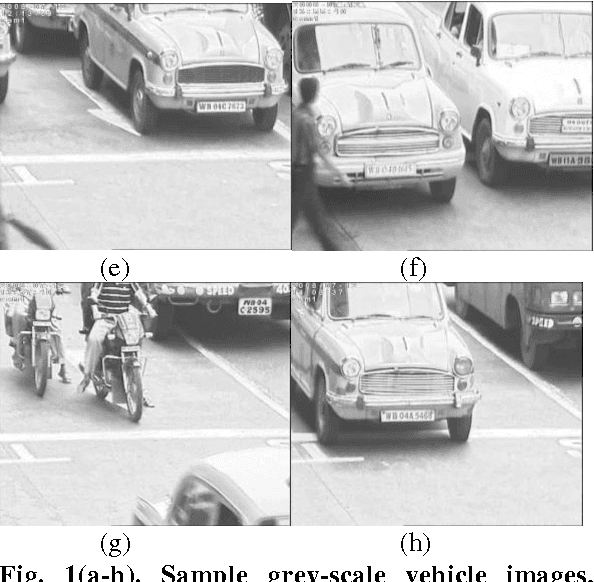
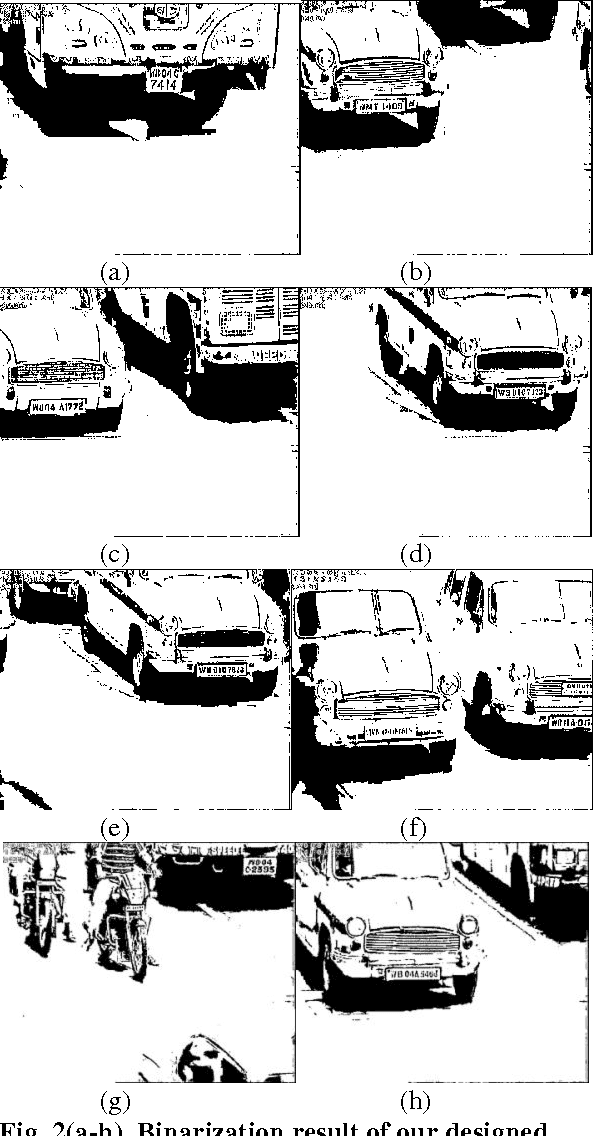
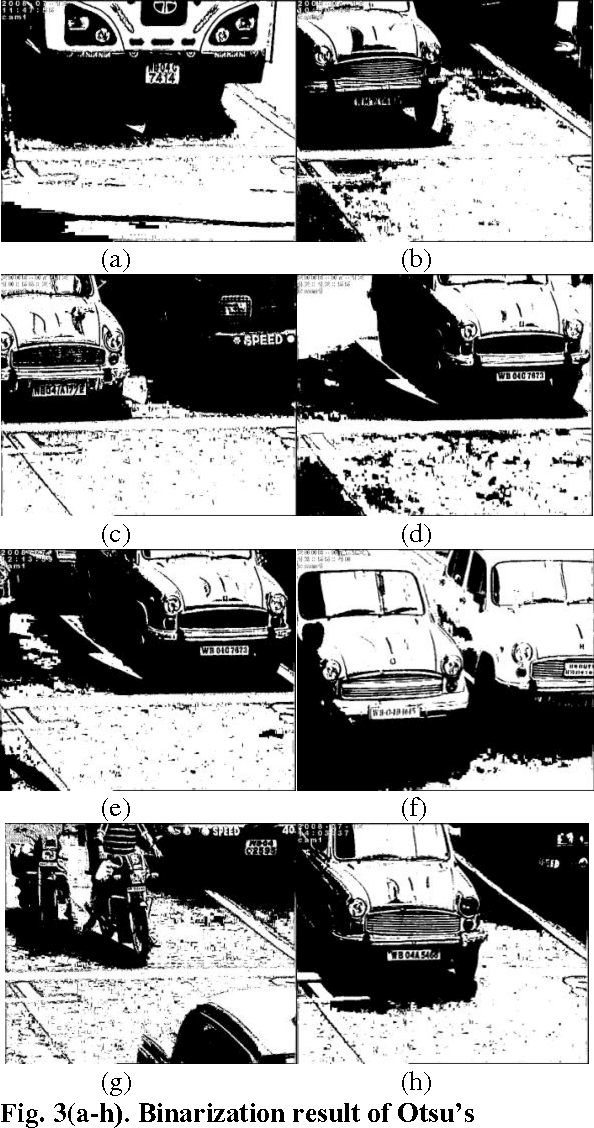
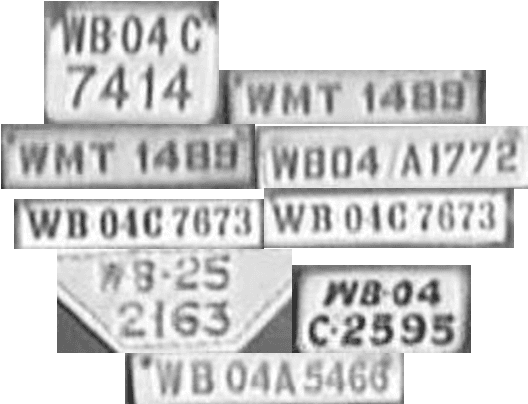
Abstract:Automatic License Plate Recognition system is a challenging area of research now-a-days and binarization is an integral and most important part of it. In case of a real life scenario, most of existing methods fail to properly binarize the image of a vehicle in a congested road, captured through a CCD camera. In the current work we have applied histogram equalization technique over the complete image and also over different hierarchy of image partitioning. A novel scheme is formulated for giving the membership value to each pixel for each hierarchy of histogram equalization. Then the image is binarized depending on the net membership value of each pixel. The technique is exhaustively evaluated on the vehicle image dataset as well as the license plate dataset, giving satisfactory performances.
An Improved Feature Descriptor for Recognition of Handwritten Bangla Alphabet
Jan 22, 2015



Abstract:Appropriate feature set for representation of pattern classes is one of the most important aspects of handwritten character recognition. The effectiveness of features depends on the discriminating power of the features chosen to represent patterns of different classes. However, discriminatory features are not easily measurable. Investigative experimentation is necessary for identifying discriminatory features. In the present work we have identified a new variation of feature set which significantly outperforms on handwritten Bangla alphabet from the previously used feature set. 132 number of features in all viz. modified shadow features, octant and centroid features, distance based features, quad tree based longest run features are used here. Using this feature set the recognition performance increases sharply from the 75.05% observed in our previous work [7], to 85.40% on 50 character classes with MLP based classifier on the same dataset.
A GA Based approach for selection of local features for recognition of handwritten Bangla numerals
Jan 22, 2015
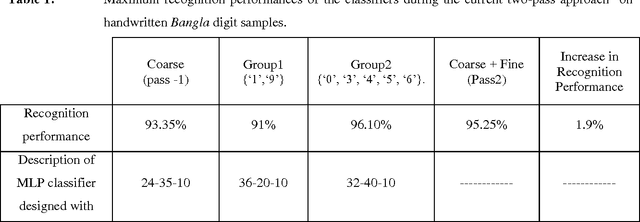

Abstract:Soft computing approaches are mainly designed to address the real world ill-defined, imprecisely formulated problems, combining different kind of novel models of computation, such as neural networks, genetic algorithms (GAs. Handwritten digit recognition is a typical example of one such problem. In the current work we have developed a two-pass approach where the first pass classifier performs a coarse classification, based on some global features of the input pattern by restricting the possibility of classification decisions within a group of classes, smaller than the number of classes considered initially. In the second pass, the group specific classifiers concentrate on the features extracted from the selected local regions, and refine the earlier decision by combining the local and the global features for selecting the true class of the input pattern from the group of candidate classes selected in the first pass. To optimize the selection of local regions a GA based approach has been developed here. The maximum recognition performance on Bangla digit samples as achieved on the test set, during the first pass of the two pass approach is 93.35%. After combining the results of the two stage classifiers, an overall success rate of 95.25% is achieved.
Design of a novel convex hull based feature set for recognition of isolated handwritten Roman numerals
Jan 22, 2015

Abstract:In this paper, convex hull based features are used for recognition of isolated Roman numerals using a Multi Layer Perceptron (MLP) based classifier. Experiments of convex hull based features for handwritten character recognition are few in numbers. Convex hull of a pattern and the centroid of the convex hull both are affine invariant attributes. In this work, 25 features are extracted based on different bays attributes of the convex hull of the digit patterns. Then these patterns are divided into four sub-images with respect to the centroid of the convex hull boundary. From each such sub-image 25 bays features are also calculated. In all 125 convex hull based features are extracted for each numeric digit patterns under the current experiment. The performance of the designed feature set is tested on the standard MNIST data set, consisting of 60000 training and 10000 test images of handwritten Roman using an MLP based classifier a maximum success rate of 97.44% is achieved on the test data.
Handwritten Devanagari Script Segmentation: A non-linear Fuzzy Approach
Jan 22, 2015



Abstract:The paper concentrates on improvement of segmentation accuracy by addressing some of the key challenges of handwritten Devanagari word image segmentation technique. In the present work, we have developed a new feature based approach for identification of Matra pixels from a word image, design of a non-linear fuzzy membership functions for headline estimation and finally design of a non-linear fuzzy functions for identifying segmentation points on the Matra. The segmentation accuracy achieved by the current technique is 94.8%. This shows an improvement of performance by 1.8% over the previous technique [1] on a 300-word dataset, used for the current experiment.
Online Tracking of Skin Colour Regions Against a Complex Background
Oct 15, 2014



Abstract:Online tracking of human activity against a complex background is a challenging task for many applications. In this paper, we have developed a robust technique for localizing skin colour regions from unconstrained image frames. A simple and fast segmentation algorithm is used to train a multiplayer perceptron (MLP) for detection of skin colours. Stepper motors are synchronized with the MLP to track the movement of the skin colour regions.
A two-pass fuzzy-geno approach to pattern classification
Oct 15, 2014
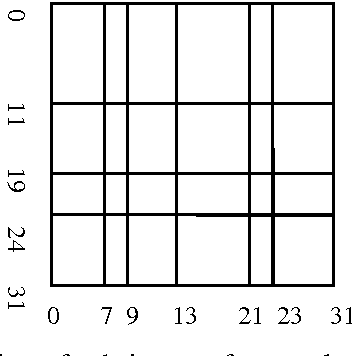
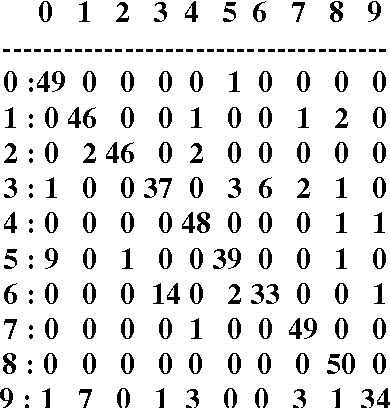

Abstract:The work presents an extension of the fuzzy approach to 2-D shape recognition [1] through refinement of initial or coarse classification decisions under a two pass approach. In this approach, an unknown pattern is classified by refining possible classification decisions obtained through coarse classification of the same. To build a fuzzy model of a pattern class horizontal and vertical fuzzy partitions on the sample images of the class are optimized using genetic algorithm. To make coarse classification decisions about an unknown pattern, the fuzzy representation of the pattern is compared with models of all pattern classes through a specially designed similarity measure. Coarse classification decisions are refined in the second pass to obtain the final classification decision of the unknown pattern. To do so, optimized horizontal and vertical fuzzy partitions are again created on certain regions of the image frame, specific to each group of similar type of pattern classes. It is observed through experiments that the technique improves the overall recognition rate from 86.2%, in the first pass, to 90.4% after the second pass, with 500 training samples of handwritten digits.
 Add to Chrome
Add to Chrome Add to Firefox
Add to Firefox Add to Edge
Add to Edge